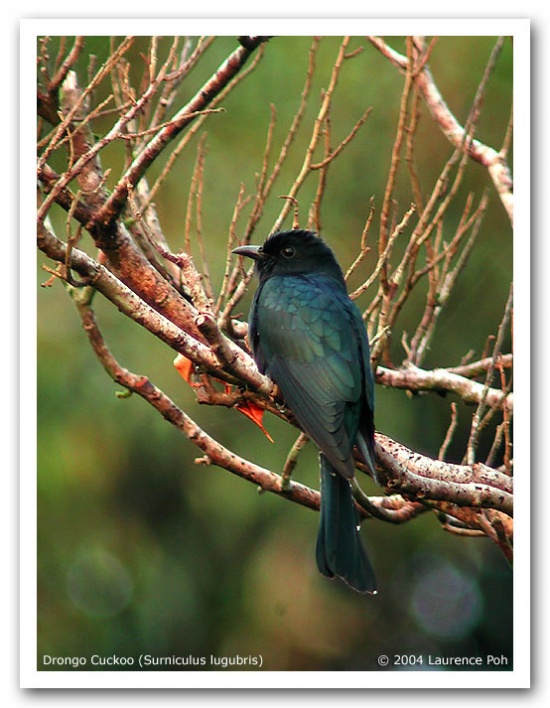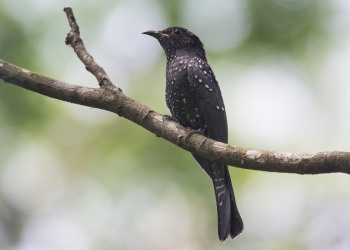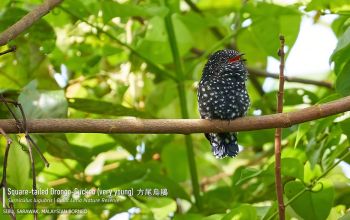- Surniculus lugubris
Identification
25cm.
Overall glossy black.Small white nuchal patch and white thighs are difficult to observe in the field.
From Drongos by thinner slightly down curved beak, forked tail (slightly) with white barrings on vent and under tail coverts.
Juvenile is slightly browner and has white spots on body and coverts.
Distribution
Asia: found in the Indian sub-continent, through south-east Asia to the Greater Sundas and Bali.
Taxonomy
This is a polytypic species[1] consisting of 3 subspecies.
Subspecies
- S. l. barussarum breeding in northeastern India, northern Myanmar, northern Thailand, northern Indochina, and southeastern China, including Hainan; winters south to Sumatra
- S. l. brachyurus from the Himalayas from Kashmir east to northeastern India and Bangladesh, Myanmar, Thailand south through the Malay Peninsula to Sumatra, Borneo, and Palawan
- S. l. lugubris in Java and Bali
This species was formerly included in Asian Drongo-Cuckoo.
Habitat
Forest and forest edges.
Behaviour
Keeps to the canopy and the crown of tall trees. Does not chase insects from a open perch in the manner of drongos.
A known brood parasite of Striped Tit-Babbler and Olive-winged Bulbul.
Very vocal.
References
- Clements, J. F., T. S. Schulenberg, M. J. Iliff, S. M. Billerman, T. A. Fredericks, J. A. Gerbracht, D. Lepage, B. L. Sullivan, and C. L. Wood. 2021. The eBird/Clements checklist of Birds of the World: v2021. Downloaded from https://www.birds.cornell.edu/clementschecklist/download/
- BF Member observations
Recommended Citation
- BirdForum Opus contributors. (2025) Square-tailed Drongo-Cuckoo. In: BirdForum, the forum for wild birds and birding. Retrieved 17 May 2025 from https://www.birdforum.net/opus/Square-tailed_Drongo-Cuckoo
External Links
GSearch checked for 2020 platform.






